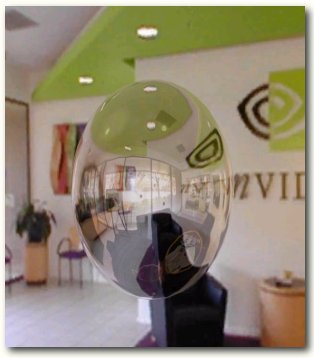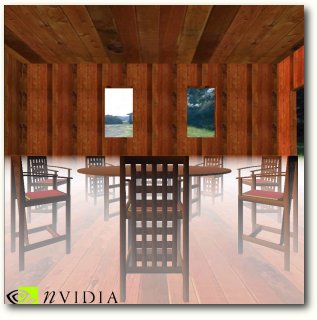High-Tech And Vertex Juggling - NVIDIA's New GeForce3 GPU
Reflection And Refraction
This is another very impressive example of what the vertex shader is able to do, created with a vertex program that is 27 instructions long. We know the cube environment mapping technique that is required for realistic reflections since DirectX6 and GeForce256. The vertex shader is able to combine this effect with a refraction effect, as you can see in the example.
You can see that the glass sphere is reflective as well as having a refraction effect on the area behind hind.
Layered Fog
We have learned that each vertex is able to carry 'fog data' and thus it is not hard to imagine that the vertex shader can influence this data, meaning it can add fog of different intensity to different vertices. The layered fog in our example uses the distance that a vertex has to the floor to determine the intensity of the fog. The vertex program checks the distance to the ground and applies the according fog value to the vertex. Sounds pretty simple, doesn't it?
The only question is why there is fog in this room. The windows seem to be open. Maybe the NVIDIA engineer that created this demo was inspired by a colleague that suffers from heavy flatulence.
Get Tom's Hardware's best news and in-depth reviews, straight to your inbox.
Current page: Reflection And Refraction
Prev Page Setup For Dot Product Bump Mapping (Per Pixel Bump Mapping) Next Page More Effects
